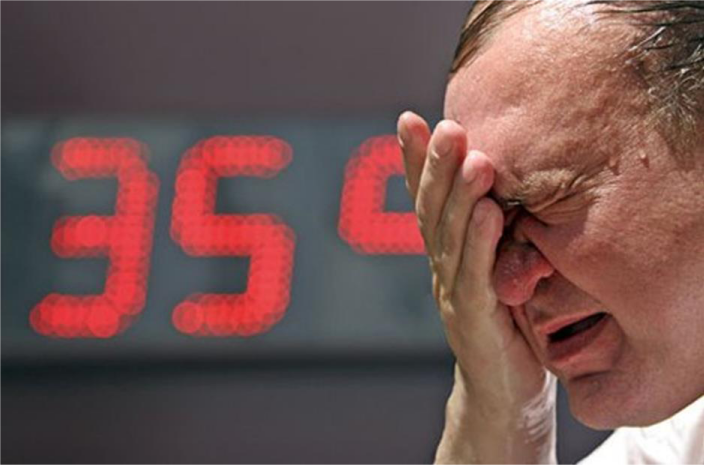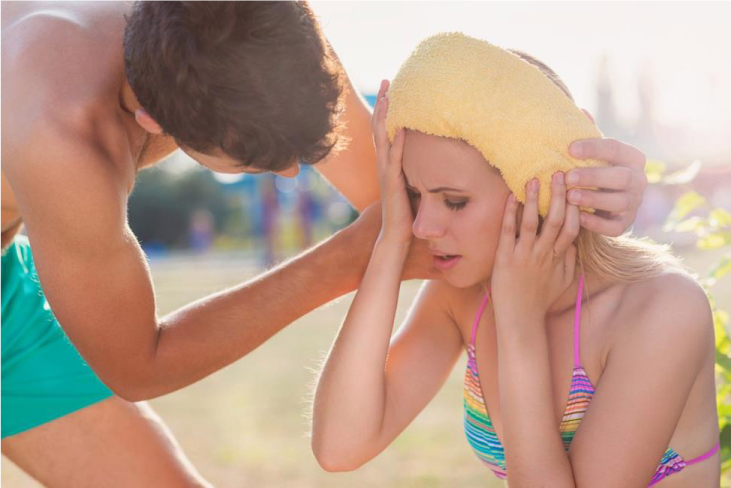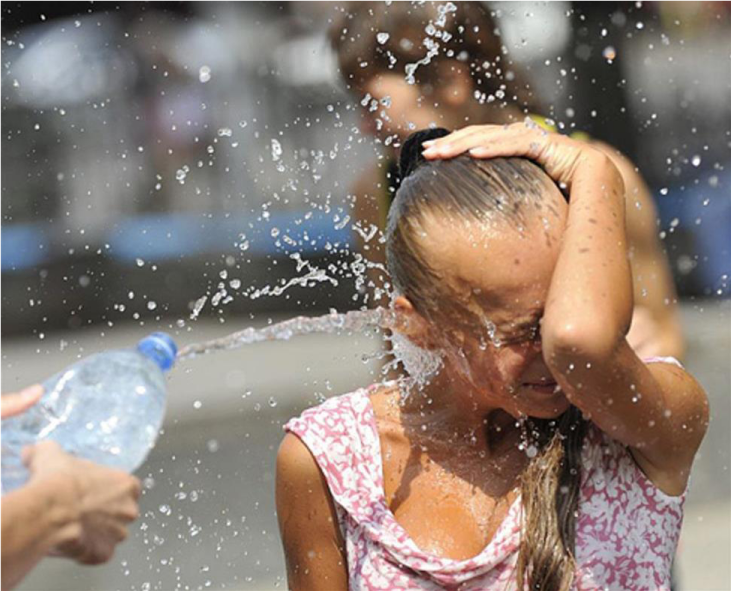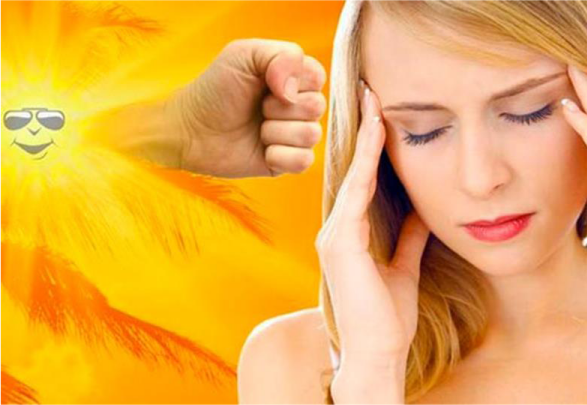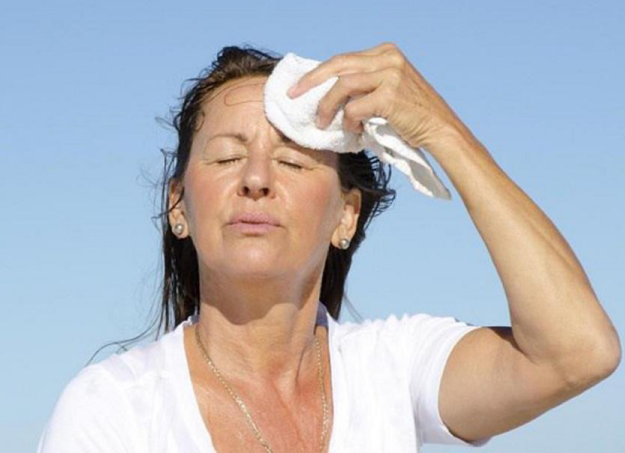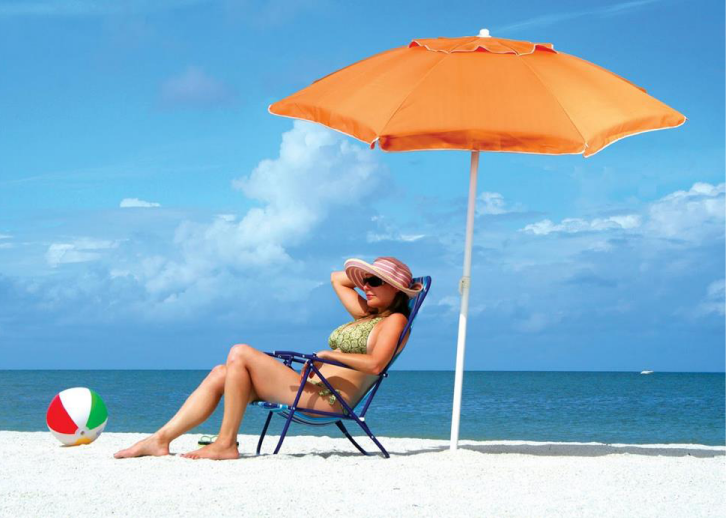More Information
Submitted: December 27, 2023 | Approved: February 02, 2024 | Published: February 05, 2024
How to cite this article: Shapovalov KA, Shapovalova LA. Lecture: “First Aid to the Population in Case of Heat and Sunstroke during Accidents, Catastrophes, Natural Disasters and Terrorist Attacks” of the Subject “Life Safety” for Humanitarian and Technical Universities. J Community Med Health Solut. 2024; 5: 008-014.
DOI: 10.29328/journal.jcmhs.1001042
Copyright License: © 2024 Shapovalov KA, et al. This is an open access article distributed under the Creative Commons Attribution License, which permits unrestricted use, distribution, and reproduction in any medium, provided the original work is properly cited.
Keywords: idactics; Heatstroke; Sunstroke; Global warming; First aid; Accidents; Catastrophes; Natural disasters; Terrorist attacks; Emergencies; Subject “Life safety”
Lecture: “First Aid to the Population in Case of Heat and Sunstroke during Accidents, Catastrophes, Natural Disasters and Terrorist Attacks” of the Subject “Life Safety” for Humanitarian and Technical Universities
Shapovalov KA1,2* and Shapovalova LA1
and Shapovalova LA1
1State Educational Institution of Additional Pedagogical Education “Komi Republican Institute for the Development of Education”, Syktyvkar, Komi Republic, Russian Federation
2State Budgetary Health Institution of the Republic of Komi “Syktyvkar Children’s Polyclinic No. 3”, Syktyvkar, Komi Republic, Russian Federation
*Address for Correspondence: Shapovalov KA, State Educational Institution of Additional Pedagogical Education “Komi Republican Institute for the Development of Education”, Syktyvkar, Komi Republic, Russian Federation, Email: [email protected]
To prepare the population for first aid in case of heat and sunstroke in the context of global warming, algorithms for the basics of didactics of the educational topic “Heat and sunstroke” of the subject “Life safety” are proposed. The 30-year experience of teaching the subject in humanitarian state educational institutions of higher professional education of a non-medical profile in Syktyvkar is summarized. For each of the considered educational issues, a brief summary of the material presented is given.
Bright sun and high outside temperatures are two extremely dangerous signs of global climate change towards warming. More than 61 thousand people died in Europe due to the summer heat of 2022; these are mainly older women from Mediterranean countries. However, the highest mortality rate for Europeans from the heat was in the summer and in September 2003, when it reached 71 thousand people. The authors propose a comprehensive methodological approach to the prevention of heat and sunstroke, which is proposed for information education of the population of the Komi Republic and the Russian Federation and tested both on the websites of medical institutions and on the pages of scientific journals. Educational questions are considered: 1) The concept of thermoregulation. General effects of high temperature on the body; 2) Heatstroke. First aid; 3) Sunstroke. First aid.
Extreme weather events
Associated with global warming cause cascading health effects that are increasingly difficult to manage. Two extreme heatwaves in 2003 (Western Europe) and 2010 (Russian Federation) accounted for 80% of weather-related deaths in Europe between 1970 and 2019. Lessons learned from the 2003 heat wave have been instrumental in implementing early warnings and action plans for the heat wave/health hazard [1-6].
With global warming of 1.5 °C (2.7 °F), the world will face imminent multiple climate threats over the next two decades. Even temporarily exceeding this level of warming will lead to additional serious consequences, some of which will be irreversible. It will cause dangerous and widespread disruption to nature and affect the lives of 8 billion people around the world, despite efforts to reduce risks.
There are no longer enough forecasts of what the weather WILL be. Impact forecasts are critical to saving lives and livelihoods, informing the public about what the weather WILL DO. However, one in three people is still not sufficiently covered by early warning systems.
The Global Heat Health Information Network should step up efforts to prevent the most common consequences of rising temperatures and solar activity, heat, and sunstroke [7-9].
As Gazeta.ru reported on July 20, 2023, at 13:49 ... In Sicily, the pan-European temperature record is almost broken - +48.8 degrees Celsius. In Provence and Corsica at night - about +27 degrees. Wildfires also broke out in Greece, Switzerland, and Spain. The terrible heat will last in Europe for several more days. In 2022, more than 60 thousand people died in the EU due to the effects of abnormally hot weather, Bloomberg reported. The consequences of “heat stroke” in 2023 are yet to be calculated [10-13].
The general effect of high temperature on the body
The system of thermoregulation of the human body ensures the constancy of its internal environment at the level of + 36.6-37.0 °C. Thermoregulation is the ability of humans, mammals, and birds to maintain the temperature of the brain and internal organs within certain narrow limits, despite significant fluctuations in the temperature of the external environment and own heat production. The temperature of the internal environment of the body is maintained at a constant level according to the principle of self-regulation. The human body maintains body temperature at 36.6-37.0 °C. A change in body temperature, both upward and downward, can cause various painful disorders and even death. Life processes in the body proceed within narrow temperature limits: from +22.0 °С to +43.0 °С. An increase in the temperature of living tissues above +45.0-47.0 °C is accompanied by irreversible changes and the termination of life due to protein coagulation and enzyme deactivation. Damage arising from the action of high temperature may be the result of its general (overheating) or local (burns) action Picture 1 [14,15].
Picture 1: Impossible heat.
The general effect of high temperature on the body can manifest itself in the form of heat and sunstroke.
Heat stroke (heat fever)
An acute disease of humans and animals, caused by disorders of thermoregulation with prolonged exposure of the body to high environmental temperatures. This condition is observed in conditions conducive to overheating of the body: at high temperature, high humidity, and increased muscle work. Such conditions may occur in hot shops, among soldiers marching in columns during the hot season, and so on. Heat stroke is promoted by tight, poorly breathable clothing, and overwork. In infants, heat stroke is often caused by being in an overheated room, in a crib placed near radiators and central heating pipes, or near a hot stove Picture 2 [16,17].
Picture 2: Honey, are you feeling that bad? A cold compress will definitely help you.
Clinical picture
With heat stroke, body temperature can rise up to 41°C. At the same time, blanching of the skin, blue mucous membranes and lips, weakness, severe headache, dilated pupils, increased sweating, shortness of breath, and then cessation of sweating develop. The skin is dry and hot. There are pains in the epigastric region, nausea, vomiting, muscle spasms, frequent urge to urinate, increased heart rate, drop in blood pressure, redness of the face, deterioration or loss of consciousness, convulsions, in severe cases, death. Thus, heat stroke is a consequence of the general overheating of the body.
In such cases, one needs to think about their health and the health of their loved ones. They need to be protected. Who suffers the most? First of all, children. It is best to postpone travel with them in stuffy cars, buses, and trains, and long hikes in hot weather. Organize the flow of fresh cool air into the room where there are children. One cannot be under the sun with an uncovered head [18].
Features of heat stroke in children
In infants, the disease develops very rapidly: rapidly growing dyspeptic disorders (continuous vomiting, diarrhea) come to the fore. The general condition is rapidly deteriorating, the body temperature rises to + 40-41 ° C, facial features become sharper due to dehydration, the skin turns pale, consciousness becomes clouded, convulsions occur and coma develops. In older children, the clinical picture of heat stroke is similar to that in adults Picture 3.
Picture 3: On a hot day, such pampering is a lifesaver.
What to do if you are no longer children?
On hot days, people of older age groups also need to responsibly monitor their well-being. Try to stay at home and always keep on hand the medicines prescribed by the doctor. The phone must be turned on and working in order to call a doctor or an ambulance team when one becomes ill. In the heat, one should not get carried away with dacha, as a rule, physically hard work. Try not to use stuffy and crowded public transport. Carefully monitor one’s own well-being.
Self-help: If on a hot day after being in a stuffy room or in the sun having a strong thirst, dry mouth, and reddened skin of the face, one needs to find a cool place, drink cold liquids, take a shower or swim if possible. If one has not done this, and a headache, weakness, tinnitus, nausea, increased heart rate and breathing, fever, or convulsions appear - urgently seek medical help, and call an ambulance.
In severe cases, one can lose consciousness.
First aid: 1) Urgently remove the patient from the overheating zone to a cool place with sufficient oxygen supply and low humidity without crowds. Assess the condition of the victim. Check for spontaneous breathing and heartbeat;
2) Provide access to fresh air.
3) Lay the victim on their back. Raise one’s legs and head to a height of about 25 cm, placing a roller under them, for example, from rolled-up clothes.
If there was at least one vomiting
4) Free the airways from possible vomit;
5) Position the patient to prevent possible choking with vomit;
6) Unfasten the collar, free from tight and restrictive clothing that squeezes the neck and chest;
7) Remove the trouser belt from the victim. If the clothes are made of dense or synthetic fabrics, it is better to take them off completely.
8) Sprinkle the body with cold water or wrap it in a wet, cool sheet. The water temperature should be around 20°C. If the victim’s condition allows, help them take a bath with cool water (+18-20 °C).
9) Put a cold compress on their forehead. Moisten the face with cold water.
10) Give the victim plenty of cold water to drink (preferably mineral water). One can prepare a sugar-salt solution - for 1 liter of boiled water, 1 teaspoon of salt, 1/2 teaspoon of baking soda, and 8 teaspoons of granulated sugar is needed. If it is not possible to prepare such a composition, use plain cool water;
11) In case of dizziness, give a sniff of a cotton swab moistened with ammonia or a solution of 10% ammonia.
12) In severe cases of overheating, dousing with cold water, or wrapping the head and inguinal region with ice in plastic bags is indicated (if there is no ice, use frozen foods: fish, meat).
13) When breathing and (or) heartbeat stops, be ready for resuscitation measures: mouth-to-mouth or mouth-to-nose artificial respiration and chest compressions.
14) Call an ambulance. How to do it right? In order not to be distracted by the main rescuer, it is better if their assistant makes the call. The emergency dispatcher needs to correctly name the street and house number closest to the scene; and outside the city - well-known landmarks and ways to get to it. Indicate the time of the incident or the time of discovery of the consequences. Be sure to report additional dangers, especially if it is a traffic accident with carriers of dangerous goods. Mention the number of victims, whether there are children and pregnant women among them; name the names, sex, and age of the victims; unknown - gender and approximate age; identify oneself and provide a phone number. If possible, organize a meeting of the ambulance team.
One needs to know that the ambulance service is prohibited from transporting corpses.
Hospitalization in severe cases - in the intensive care unit, emergency department, or the usual therapeutic (children’s) department.
How to avoid heat stroke?
Exclude the reasons leading to it (Read at the beginning):
- Limit one’s activity, including physical activity, from 11.00 to 16.00 on especially hot days, do not be in the open sun during these hours. By the way, according to the World Health Organization, this is the most unfavorable time for sunbathing;
- Clothing must be well-ventilated, loose-fitting, white or light-coloured cotton natural fabrics;
- In hot weather, be sure to wear a light-colored hat with good ventilation;
- Drink at least 2.0-2.5 liters of fluid per day. With physical work, its amount can be increased. Thirst is quenched by fruit drinks, kvass, and hot green tea is especially good.
- Create good ventilation in the room where the person and their family are. Opening windows and using a fan will not hurt them. But air conditioners in the conditions of the Komi Republic do more harm than good. From my point of view, it is expensive, not effective, and with rare replacements of cleaning filters, it is even dangerous.
- Avoid fatty and fried foods, avoid overeating.
- Do not use alcohol, drugs, or other toxic substances [19].
Symptoms of heatstroke
- Disorder of consciousness
- Headache
- Nosebleeds
- Vomiting, thirst
- Rapid pulse
- Increased sweating
- Increased body temperature (up to +40 °C)
- Dry, hot skin
Symptoms of sunstroke
- Strong headache
- Dizziness
- Nausea
- Darkening in the eyes
- Facial redness
- Possible skin burns
Children and people suffering from cardiovascular diseases are most susceptible to sun and heatstroke
First aid
- Move the victim to the shade or cool place
- Lay on his/her back, raise his/her head
- Drink cold water
- Apply a cold compress to the head
- Pour cold water over the head and heart for 15 minutes
- Give ammonia a whiff
- If necessary, perform artificial respiration
Sunstroke
An acutely developing painful condition in humans and animals, caused by a violation of brain functions as a result of the direct action of sunlight on the head. As a result, the nervous system and the most important centers in the medulla oblongata are damaged. Most often, sunstroke occurs when working in the field with an uncovered head (especially in people who are unaccustomed to prolonged exposure to the sun) or when sunbathing is abused on the beaches. Sunstroke can occur both during the time of increased solar exposure and 6-8 hours after it. In this case, local overheating occurs, a rush of blood to the head, overheating of the brain, followed by a violation of the central nervous system Pictures 4,5 [20].
Picture 4: Attack sunstroke.
Picture 5: I’m dying from the heat.
Risk factors for sunstroke:
1) Direct exposure to sunlight on the head
2) High humidity of the environment;
3) The presence of special health problems (vegetovascular dystonia, heart disease, hypertension, endocrine disorders, obesity);
4) Age up to 1 year (especially newborns) and persons of older age groups (in babies, the natural thermoregulation of the body is not yet sufficiently perfect, and in the elderly it already functions poorly);
5) Overweight;
6) Smoking;
7) Alcoholic, narcotic, or other toxic intoxication;
8) Nervous tension and stress [21].
Clinical picture: Patients complain of headache, dizziness, tinnitus, fatigue, loss of appetite, nausea, and chills. On examination, redness (hyperemia) of the skin of the face and head is revealed, the pattern of the vessels of the sclera of the eyes (scleral injection) is enhanced, and profuse sweating, fever, a marked increase in heart rate and respiration, and sometimes nosebleeds occur. Perhaps a decrease in blood pressure, the appearance of vomiting, or diarrhea.
In severe cases, a severe headache occurs, and body temperature can rise to 41 ° C. The patient falls into prostration and loses consciousness. Breathing sharply quickens. A drop in cardiac activity is possible with symptoms of stagnation in the lungs and even edema. A fast pulse (tachycardia) may be replaced by a slow pulse (bradycardia). Convulsions, coma develop.
First aid: In mild cases, it is enough to transfer the patient to the shade, give them cold water to drink, put a cold compress on their head, then put them to bed, and give them plenty of drink and light food.
In severe cases, the patient should be transferred to a shaded, cool place, undressed, and cooled (pour cool water, put cold compresses or ice on the head and inguinal areas, and apply a wet wrap.). Call an ambulance, as there may be a drop in cardiac activity and respiratory distress.
That is, carry out the same activities as heat stroke. Additionally, it is recommended to drink low-fat cream (buttermilk).
Buttermilk (fat-free cream) is another effective first aid for sunstroke. It is best to drink at least 2-3 glasses of buttermilk daily until the symptoms of sunstroke are completely gone.
After a sunstroke, patients are strongly advised to rest in bed for several days. This time will be spent by the body to restore the activity of the nervous system, blood circulation, and a number of biochemical reactions. Do not neglect these instructions of doctors, otherwise the risk of a recurrence of such a condition only increases.
The doctor decides on hospitalization: in severe cases - in the intensive care unit, the emergency department, or the usual therapeutic department [22].
Prevention of sunstroke
1) Cover the head with a light, well-ventilated headdress and eyes with dark glasses;
2) Avoid prolonged (more than 2-3 hours) exposure to the sun, on the beach;
3) Do not stay in open spaces with direct sunlight (especially during the period of active sun: from 12.00 to 16.00). In countries close to the Equator - from 10.00 to 17.00. Please note that only Russians sunbathe in the open spaces of the beach and hotel pools in southern countries. Europeans also sunbathe, but only in reflected ultraviolet rays, while under awnings. This is what the World Health Organization recommends;
4) The initial duration of sunbathing should not exceed 15-20 minutes, then it can be gradually extended, but not more than two hours and always with interruptions;
5) Sunbathing is better not lying down, but in motion. Sunbathing should be taken in the morning and evening hours and not earlier than an hour after eating. It is useful to combine them with bathing;
6) Wear light, light-colored clothes, made of natural fabrics, easily ventilated (linen, cotton), and do not prevent sweat from evaporating;
7) In hot weather, do not eat too much. Give preference to dairy products and vegetables;
8) Maintain the water balance in the body (preferably with cool water - drink about 3 liters a day) to prevent dehydration;
9) Use an umbrella from the sun (light shades);
10) Wipe the face from time to time with a handkerchief soaked in cool water;
11) If feeling unwell, seek help and take the most possible measures.
To avoid sunstroke, in hot sunny weather, it is recommended to wear hats made of light-colored material, which reflects sunlight more strongly Picture 6.
Picture 6: A healthy tan with all the precautions.
Here are specific recommendations for lovers of a beautiful and proper sun tan [23]:
1) The first sunbathing should not last more than 10 minutes, and if the skin is light - even less. At first, it is better to lie under the sun for no longer than five minutes. Retire to the shade for 20-30 minutes, and then continue to sunbathe.
2) Apply sunscreen no later than half an hour before going to the beach.
3) After emerging from the sea or river, it is advisable to use a towel to dry oneself. Many small drops act as mini magnifiers that create microburns on the skin. For the same reason, it is not recommended to water the garden with a hose in hot weather (water drops focus on the sun's rays and cause burns on the leaves).
4) Headgear on the beach (hat, panama), as well as sunglasses with UV protection - things are required. Glasses must be of good quality. Poor-quality glasses that block visible light and let in ultraviolet light are even more dangerous than no sunglasses! Indeed, with a lack of light, the pupils reflexively expand, and more ultraviolet radiation enters the eyes.
Ordinary glass and ordinary glasses block up to 60-70% of ultraviolet radiation, so one will not be able to get a tan in the winter in an apartment. And germicidal ultraviolet lamps in hospitals are made of quartz glass, it does not interfere with ultraviolet rays.
5) If one is taking any medications, carefully read the instructions for them. So the antibiotic lomefloxacin increased sensitivity to sunlight (this is called photosensitivity) so a 10-15 minute exposure to the sun at 8 in the morning caused 1st degree burns on the face and exposed areas of the arms and legs. The use of protective creams is a must here [24-26]. Be careful and careful when staying in stuffy rooms and in direct sunlight!
The proposed approach will allow the population to more easily understand the essence of the physiological changes that occur in their bodies during heat and sunstroke. Concentrate the attention on simple, accessible, and low-cost preventive measures that will not only avoid dangerous complications but also completely prevent the very occurrence of dangerous pathological conditions associated with impaired thermoregulation.
The authors express their sincere love to their parents. The authors are grateful to Bychikhin NP, Kucherenko VZ, Zhuravlev SM, Novikov PE, Orlov GA, Dobrodeeva LK, Klepikova RA, Udalova LS, Lus EA, Kuznetsova MN, Smolnikov LA, Ternovsky LN, Batygina NI, Rzhevskaya VN, Duberman LB, Akhmeev VN, Schumacher RE, Gribanov VV and also to all anonymous reviewers for support, useful advice and comments.
A number of photographs, drawings, and diagrams, which are freely available on the Internet without indicating the authors, were used in the article in the original and in translation for scientific, informational, and educational purposes, as well as to reveal the creative intent of the authors of legally published works to the extent justified by the purpose of citation.
- How Europe is coping with heat waves. 2023. https://www.gazeta.ru/social/photo/heatwave-in-europe-2023.shtml
- Argaud L, Ferry T, Le QH, Marfisi A, Ciorba D, Achache P, Ducluzeau R, Robert D. Short- and long-term outcomes of heatstroke following the 2003 heat wave in Lyon, France. Arch Intern Med. 2007 Nov 12;167(20):2177-83. doi: 10.1001/archinte.167.20.ioi70147. Epub 2007 Aug 13. PMID: 17698677.
- Buchanan WJ. Heat stroke in India: an examination of some statistics relating. The Lancet. 1900; 156:803-805.
- Deshwal R, Tiwari D, Singh R. Clinical and Biochemical Characteristics of Exertional Heat Stroke among Paratroopers in Agra, India. J Assoc Physicians India. 2017 Feb;65(2):57-61. PMID: 28457033.
- Sahni G. The recurring epidemic of heat stroke in children in Muzaffarpur, Bihar, India. Ann Trop Med Public Health. 2013; 6:89.
- How CK, Chern CH, Wang LM, Lee CH. Heat stroke in a subtropical country. Am J Emerg Med. 2000 Jul;18(4):474-7. doi: 10.1053/ajem.2000.7349. PMID: 10919543.
- Wu X, Brady JE, Rosenberg H, Li G. Emergency Department Visits for Heat Stroke in the United States, 2009 and 2010. Inj Epidemiol. 2014 Dec;1(1):8. doi: 10.1186/2197-1714-1-8. Epub 2014 Apr 24. PMID: 27747667; PMCID: PMC5005673.
- Knowlton K, Rotkin-Ellman M, Geballe L, Max W, Solomon GM. Six climate change-related events in the United States accounted for about $14 billion in lost lives and health costs. Health Aff (Millwood). 2011 Nov;30(11):2167-76. doi: 10.1377/hlthaff.2011.0229. PMID: 22068410.
- Hayashida K, Shimizu K, Yokota H. Severe heatwave in Japan. Acute Med Surg. 2019 Jan 10;6(2):206-207. doi: 10.1002/ams2.387. PMID: 30976451; PMCID: PMC6442519.
- Ahmadalipour A, Moradkhani H. Escalating heat-stress mortality risk due to global warming in the Middle East and North Africa (MENA). Environ Int. 2018 Aug;117:215-225. doi: 10.1016/j.envint.2018.05.014. Epub 2018 May 12. PMID: 29763817.
- Casa DJ, Hosokawa Y, Belval LN, Adams WM, Stearns RL. Preventing death from exertional heat stroke—the long road from evidence to policy. Kinesiol Rev. 2017; 6:99-109.
- Díaz J, Carmona R, Mirón IJ, Ortiz C, León I, Linares C. Geographical variation in relative risks associated with heat: Update of Spain's Heat Wave Prevention Plan. Environ Int. 2015 Dec;85:273-83. doi: 10.1016/j.envint.2015.09.022. Epub 2015 Oct 2. PMID: 26433629.
- Cuerdo-Vilches T, Díaz J, López-Bueno JA, Luna MY, Navas MA, Mirón IJ, Linares C. Impact of urban heat islands on morbidity and mortality in heat waves: Observational time series analysis of Spain's five cities. Sci Total Environ. 2023 Sep 10;890:164412. doi: 10.1016/j.scitotenv.2023.164412. Epub 2023 May 23. PMID: 37230342.
- Shapovalov KA. 08.08.2016 11:45 School of Life Safety: First Aid for Heat and Sunstroke. How to Warn them. vk.com/zdorov_komi (Zdorov'e v Respublike Komi_Vkontakte). 2023. https://vk.com/zdorov_komi?w=wall-73176666_1420
- Shapovalov KA. 08.08.2016. 11:49 School of Life Safety: First Aid for Heat and Sunstroke. How to Warn them. vk.com/public109195762 (State Budgetary Healthcare Institution of the Republic of Komi "Syktyvkar City Hospital No1"_VKontakte). 2023. https://new.vk.com/public109195762?w=wall-109195762_665
- Shapovalov KA. 19.07.2017 11-59 School of Life Safety: First Aid for Heat and Sunstroke, How to Prevent the Consequences of Heat. vk.com/club122983619 (GBUZ RK «Ust-Tsilem CRH»_VKontakte). 2023. https://vk.com/club122983619?w=wall-122983619_250%2Fall
- Shapovalov KA. 15.07.2017 8-32 School of Life Safety: How to Behave in the Heat. bnkomi.ru (BNK Information Agency). 2023. https://www.bnkomi.ru/data/news/65472/
- Shapovalov KA. 18.07.2017 9-42 School of Life Safety: First Aid for Heat and Sunstroke. How to Prevent the Consequences of Heat. vk.com/public40591563 (Newspaper Zarya Timana_VKontakte). 2022. https://vk.com/public40591563?w=wall-40591563_7166
- Shapovalov КА, Shapovalova LA. Heatstroke. Features of didactics of teaching first aid for children, schoolchildren, and adolescents. Detskaya medicina Severo-Zapada. Materials of the IV National Congress with international participation Healthy children - the future of the country. 2020; 8(1):386-387. https://gpmu.org/userfiles/file/journals/Detskaya_medicina/!!!det_med_2020_1.pdf
- Shapovalov KA. 15.07.2017 9-20 Doctor of Syktyvkar Children's Polyclinic №3 Konstantin Shapovalov: "It's Important to Take Responsibility for Your Health in the Heat". komiinform.ru (Komiinform Information Agency). 2023. https://komiinform.ru/news/150486/
- Shapovalov KA. 08.08.2016 12:21 School of Life Safety: First Aid for Heat and Sunstroke. How to Warn them. new.vk.com/medvestnik (Vedomstvennoe-Izdanie Medicinskij-Vestnik_VKontakte). 2023. https://new.vk.com/medvestnik?w=wall147761699_2538%2Fall
- Shapovalov KA. 17.07.2017 9-36 School of Life Safety: First Aid for Heat and Sunstroke. How to Prevent the Consequences of Heat. vk.com/wall-122079588 (Center for Medical Prevention of the Republic of Komi_VKontakte). 2023. https://vk.com/wall-122079588?own=1&w=wall-122079588_1347
- Help VS. What do tanning and an atomic bomb have in common? 2008. http://www.happydoctor.ru/info/85
- Shapovalov KA. 18.07.2017 22-14 Good to Know. How to Provide First Aid for Heat and Sunstroke and How to Prevent the Consequences of Heat. vk.com/id332763911 (Usinsk Novosti.RF 2_VKontakte). 2023. https://vk.com/id332763911?w=wall332763911_12347
- Kravchenko J, Abernethy AP, Fawzy M, Lyerly HK. Minimization of heatwave morbidity and mortality. Am J Prev Med. 2013 Mar;44(3):274-82. doi: 10.1016/j.amepre.2012.11.015. PMID: 23415125.
- Shapovalov КА, Shapovalova LA. Sunstroke. Risk factors. Teaching schoolchildren and adolescents to the algorithm of actions in the provision of first aid. Children's medicine of the North-West (Detskaya medicina Severo-Zapada). Materials of the V National Congress with international participation "Healthy children - the future of the country." 2021; 9(1):391-392. https://gpmu.org/userfiles/file/%D0%9A%D0%9E%D0%9D%D0%93%D0%A0%D0%95%D0%A1%D0%A1/2021/det_med_2021_1.pdf (accessed 30.08.2023)] (In Russian)
